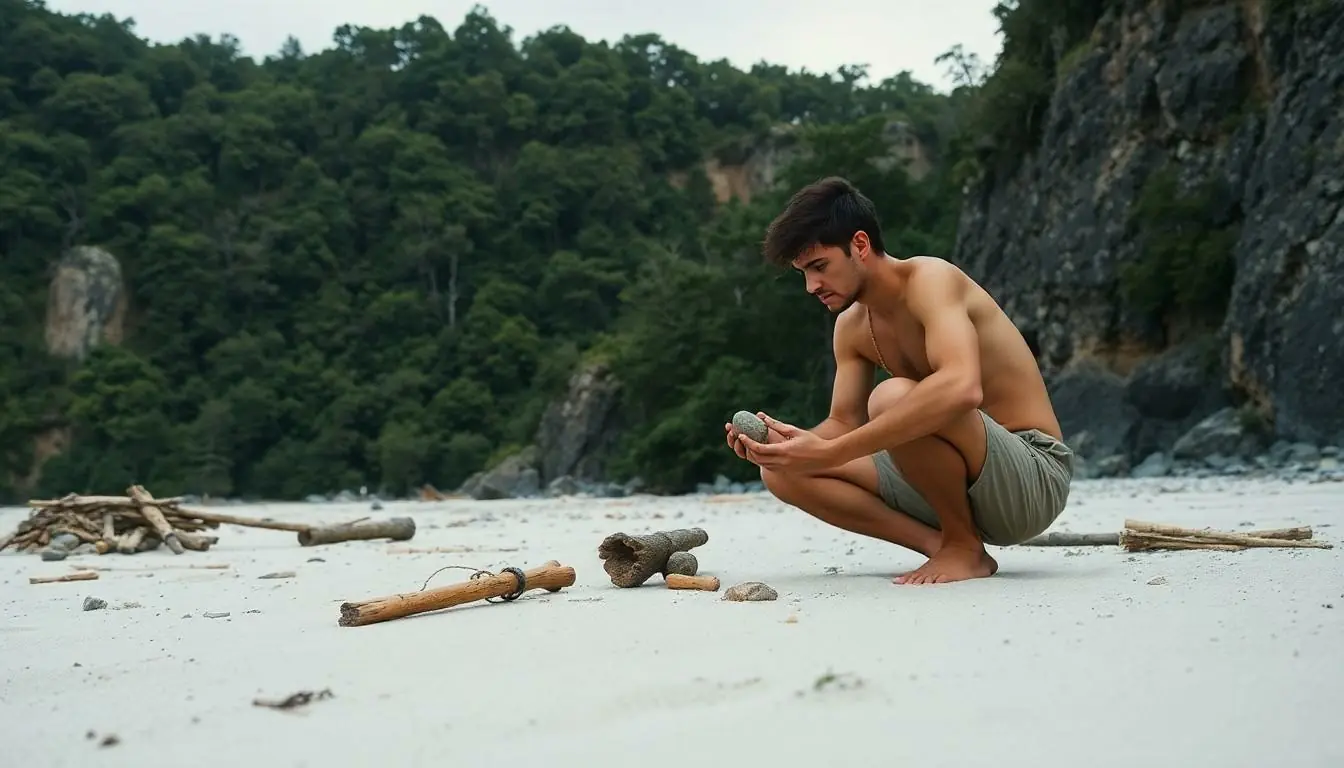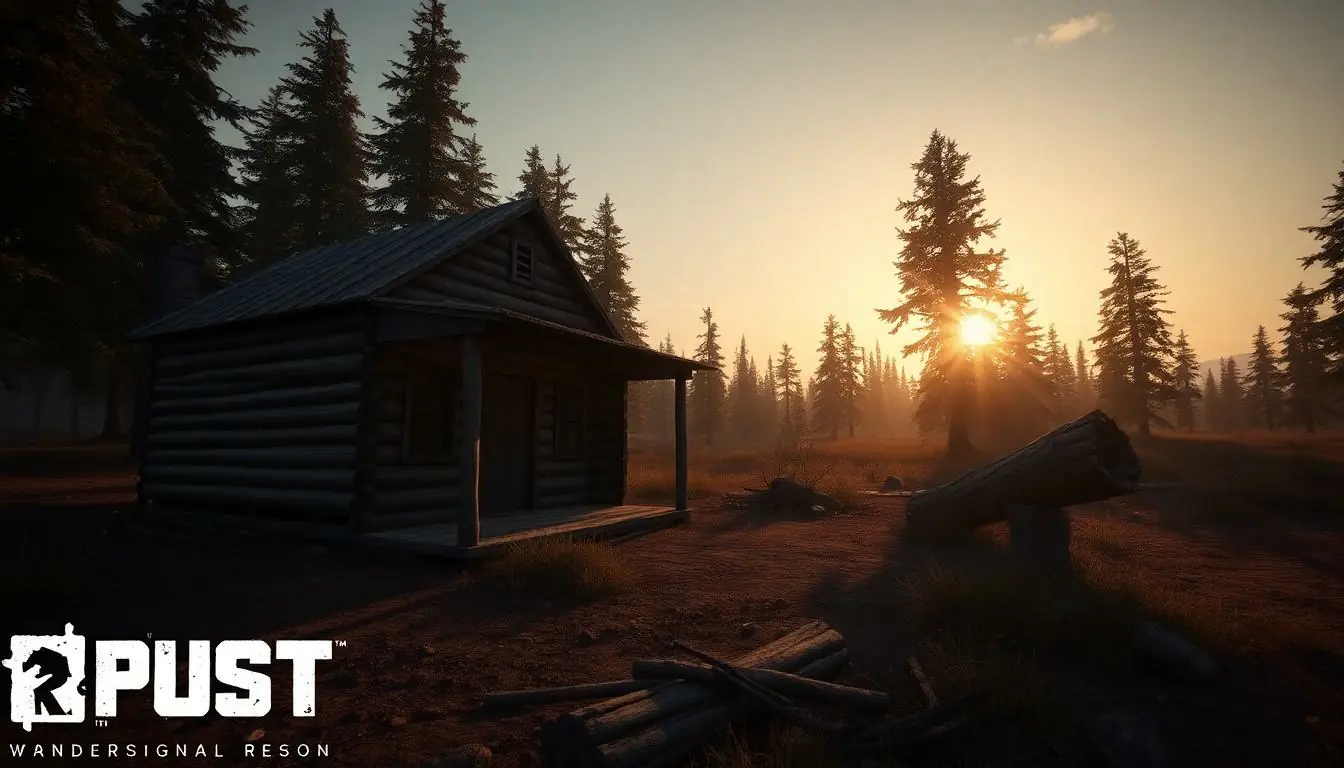Table of Contents
ToggleIn a world where survival means battling not just the elements but also other players, Rust offers a unique twist on the classic survival game formula. Picture this: you wake up naked on a beach, armed with nothing but a rock and a dream. It’s a harsh reality where crafting, scavenging, and sheer wit are your best friends.
Overview Of Rust Game Background
Rust immerses players in a harsh survival environment where they begin with minimal resources. Starting with just a rock and a torch, individuals must gather materials and craft tools to enhance their survival odds. Players face threats from wildlife, other players, and environmental hazards, creating a competitive landscape.
The game emphasizes resource management and strategic planning. Gathering wood, stone, and metal ore forms the foundation of crafting essential items like weapons, shelter, and clothing. Crafting fins and expanding equipment allows better defense and exploration capabilities.
Interactions between players can be hostile or cooperative. Forming alliances with others can provide safety in numbers, while betrayal can lead to conflicts. Players often engage in raids, where they attempt to steal resources from other bases, leading to intense gameplay dynamics.
Rust’s open-world design fosters exploration and experimentation. Everywhere, players discover abandoned structures and loot that can aid in their survival. This setting encourages strategic thinking, as risk and reward often determine survival chances.
Regular updates from the developers add fresh content and features. Continuous improvements keep the gameplay experience dynamic, allowing for new challenges and opportunities. As players adapt, they learn to master survival techniques and compete effectively in this unforgiving world.
Historical Context
Rust’s development and updates have significantly shaped its gaming landscape. The game originated in 2013 under Facepunch Studios.
Development History
Initially, Rust entered the early access stage in December 2013. Developers designed the game as a direct competitor to popular titles like DayZ. Its unique mechanics, such as building and crafting, set it apart from others in the survival genre. Over the years, community feedback played a crucial role in refining gameplay elements. Regular updates focused on enhancing graphics, mechanics, and player interactions. Developers emphasized addressing bugs and improving the overall user experience. In February 2018, Rust officially launched as a complete game, marking a substantial milestone in its journey.
Major Updates
Numerous updates have transformed Rust since its early access launch. The introduction of the blueprint system revolutionized crafting, allowing players to learn and create new items. In 2016, the game shifted to a more robust server model, enhancing stability and performance. Annual updates continued to introduce new gameplay features, such as vehicles, wildlife, and events. The launch of the “Wild West” update in 2021 added new weapons and environmental challenges. Frequent developer engagement, including community polls and events, has kept the player base actively involved in shaping the game’s evolution. Continuous content and quality improvements ensure that Rust remains a challenging and engaging survival experience.
Game Mechanics
Rust’s mechanics revolve around survival, crafting, and player interactions in a perilous environment. Players face constant threats, requiring adaptability and strategic thinking.
Core Gameplay Elements
Crafting forms the backbone of gameplay in Rust. Players gather resources like wood, stone, and metal to create weapons, tools, and shelters. The blueprint system allows for various recipes, enhancing customization and strategy. Building structures plays a critical role, offering protection from enemies. Additionally, player interactions focus on alliances and raids, shaping the social dynamics in the game. Every encounter presents an opportunity for cooperation or conflict, reinforcing the importance of community and competition.
Survival Aspects
Survival challenges arise from both environmental hazards and wildlife threats. Players must manage health, hunger, and thirst levels to stay alive. Regularly foraging for food, such as animals and plants, becomes essential. Toxic areas also require careful navigation to avoid damage. Crafting clothing and equipment helps players protect against weather effects and improve overall survivability. Resource scarcity demands constant exploration and innovation, ensuring every decision impacts survival chances acutely. Each encounter with other players can shift the balance between cooperation and hostility, heightening engagement in this ruthless landscape.
Cultural Impact
Rust has made significant cultural waves since its release, fostering a passionate community and influencing gaming trends. Its unique approach to survival mechanics attracts players and sparks discussions about gameplay strategies and experiences.
Community Influence
The Rust community thrives on collaboration and competition, offering shared experiences through forums and social media. Players share tips, strategies, and gameplay highlights, enhancing the survival experience for newcomers. Events hosted by players, such as tournaments and collaborative builds, strengthen community bonds. User-generated content and modding opportunities further enrich gameplay, inviting creativity and innovation. As a result, community feedback helps shape game updates, creating a dynamic interplay between developers and players.
Popularity in Streaming
Streaming platforms like Twitch and YouTube showcase Rust’s appeal, drawing in millions of viewers. Gamers stream their survival stories, showcasing thrilling raids and intricate base builds. Content creators craft engaging narratives, making gameplay entertaining as they react to unexpected challenges. The game’s chaotic interactions resonate with audiences, generating viral moments and growing interest among potential players. Regular updates keep the content fresh, ensuring that streamers remain invested and viewers captivated.
Future Prospects
Continued development stands as a major focus for Rust. Regular updates from Facepunch Studios consistently introduce new content, features, and gameplay adjustments. Players can anticipate enhancements and expansions that further deepen the survival experience.
Future updates aim to address player feedback, ensuring the game remains engaging and relevant. Enhancements to graphics and mechanics could enrich visual storytelling, while expanded crafting options provide new strategies for survival. Anticipation for seasonal events or limited-time challenges fosters excitement within the community, encouraging player participation.
Emerging technologies may also influence future developments. Integration of virtual reality features could offer a more immersive experience for players, bringing the harsh landscape of Rust to life. Enhanced server technology may improve gameplay stability and reduce lag, allowing for seamless interactions.
Continued community engagement is crucial for Rust’s evolution. The developer’s responsiveness to player suggestions shapes future updates, cultivating a dynamic gameplay environment. Collaborations with the player base can lead to innovative gameplay features and elevated community creativity.
Sustained popularity on streaming platforms signals a bright future. The presence of content creators sharing their experiences enhances visibility and attracts new players. Community events may foster a sense of belonging, solidifying Rust’s position in the survival genre.
Rust’s journey will emphasize not only survival mechanics but also the importance of player relationships. Future expansions aim to deepen these dynamics, encouraging more complex interactions. As players evolve, Rust will adapt, ensuring it remains a pivotal part of the gaming landscape.
Conclusion
Rust stands as a testament to the evolution of survival gaming. Its unique blend of crafting, resource management, and player interaction creates a dynamic experience that keeps players engaged. The game’s ongoing development and community involvement ensure it remains relevant and exciting.
As players navigate the harsh landscapes and forge alliances, they become part of a thriving ecosystem that values both competition and collaboration. With regular updates and a dedicated player base, Rust continues to adapt and grow, promising a future filled with new challenges and adventures. The journey in Rust is far from over, and its impact on the gaming community will undoubtedly resonate for years to come.











